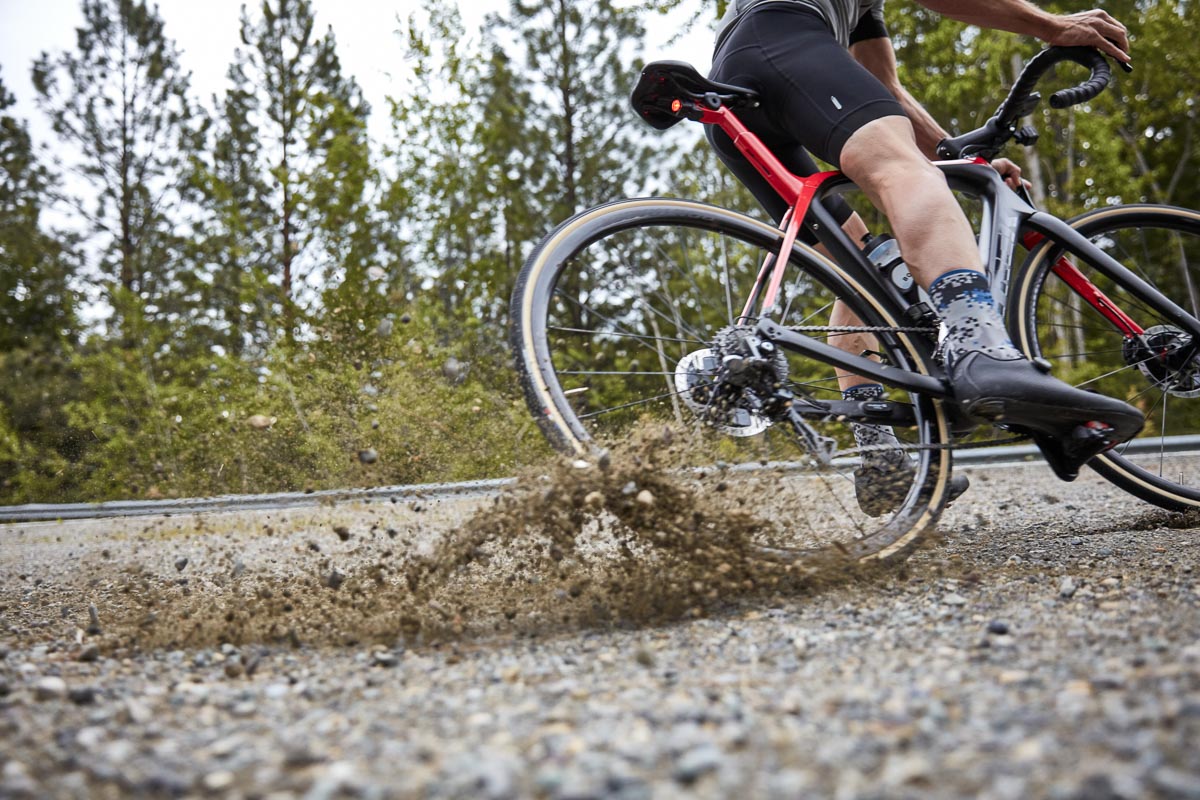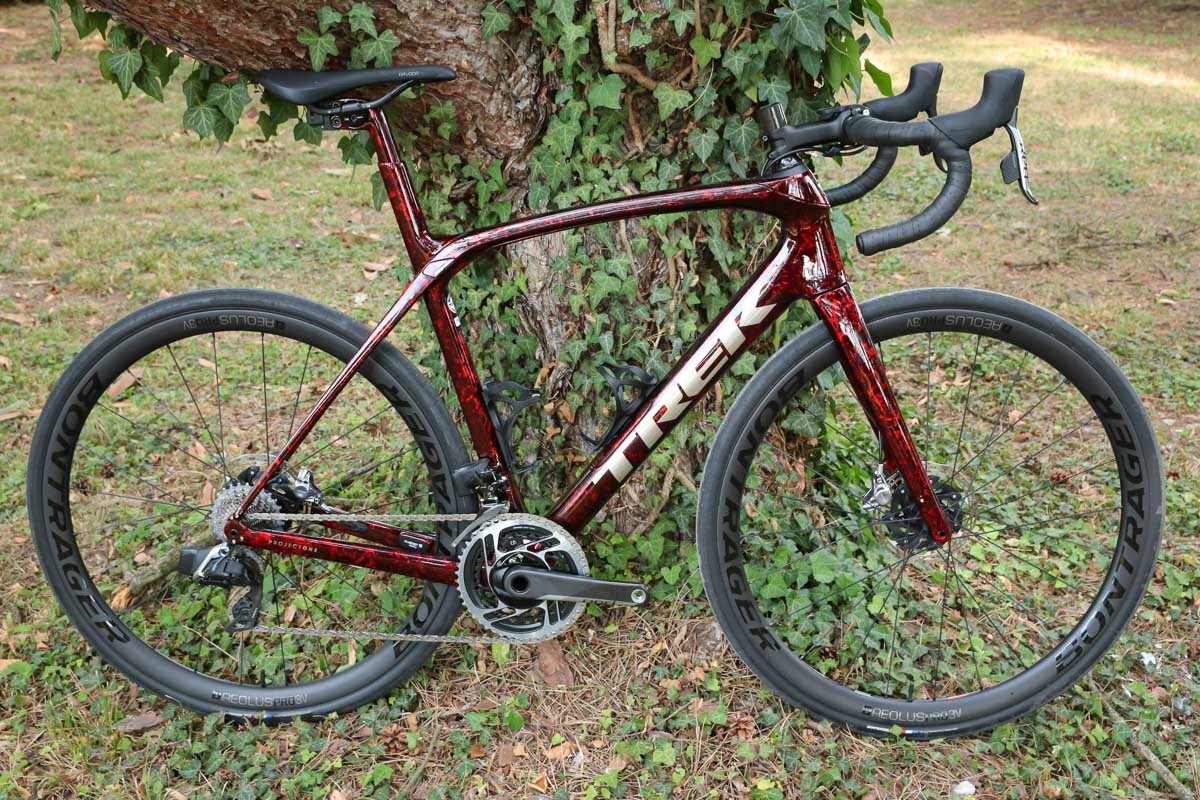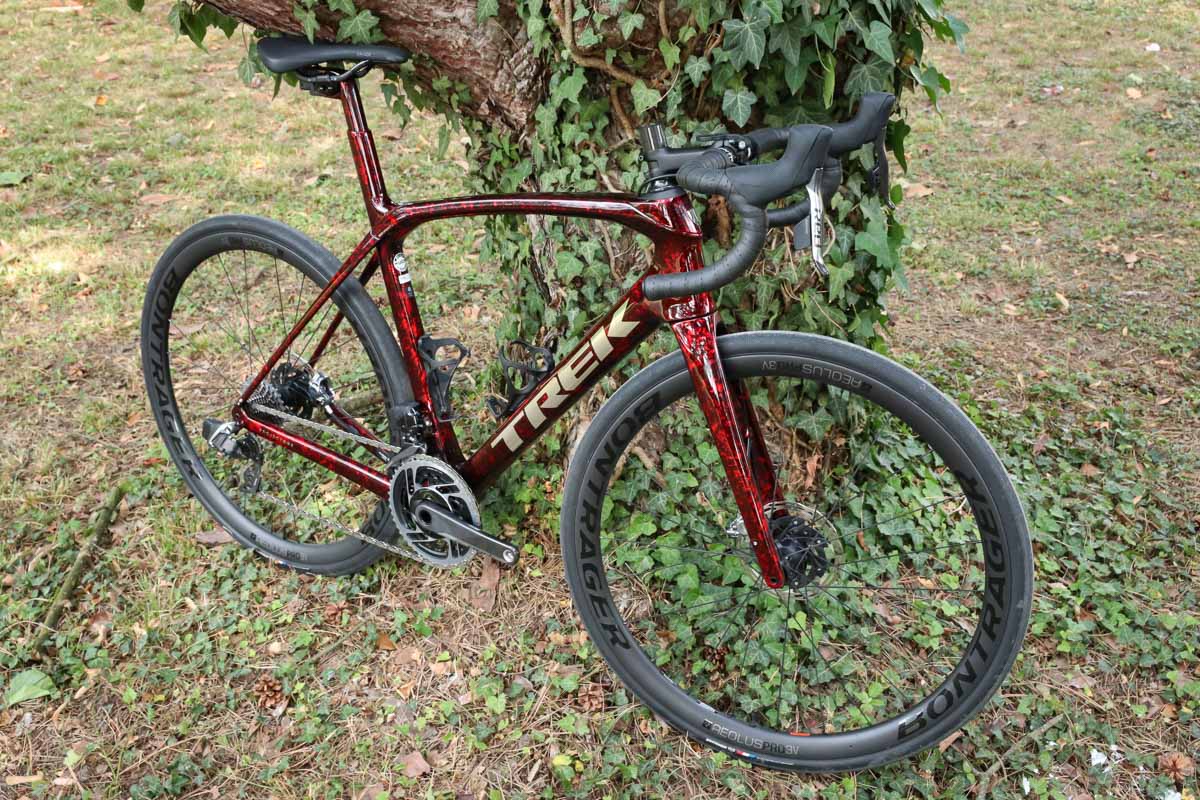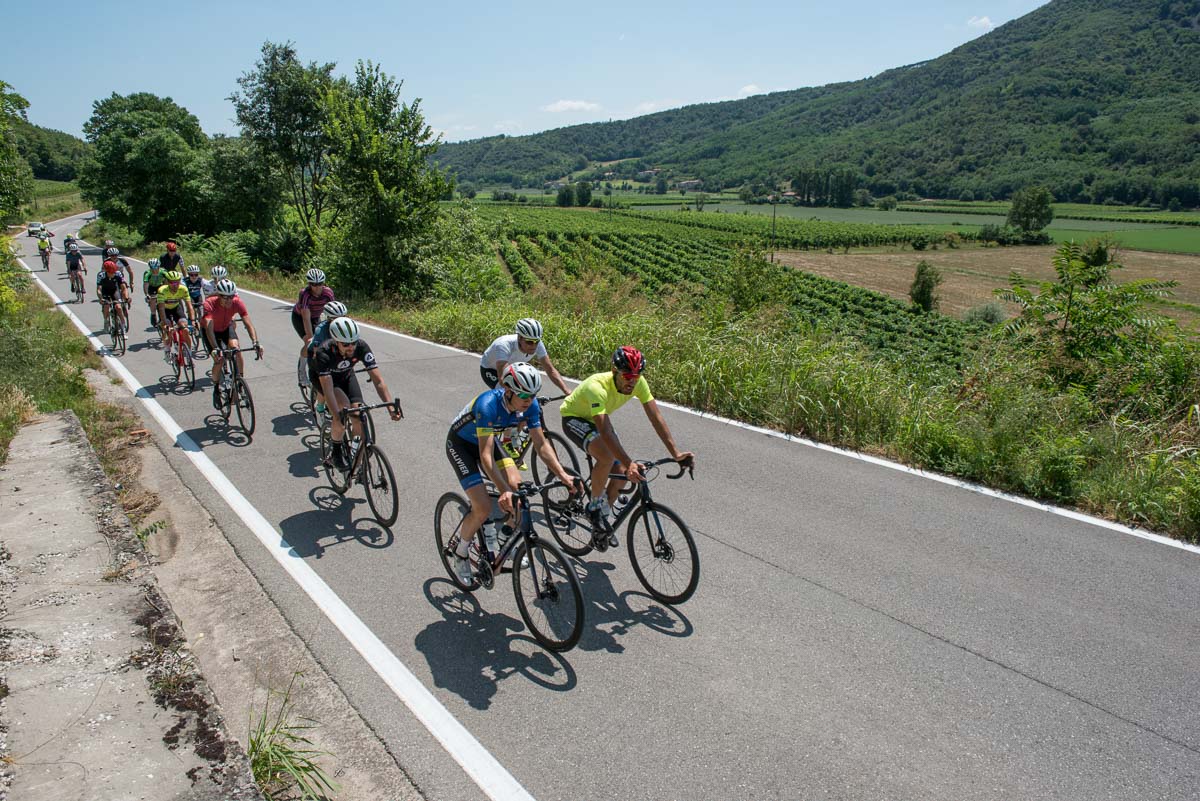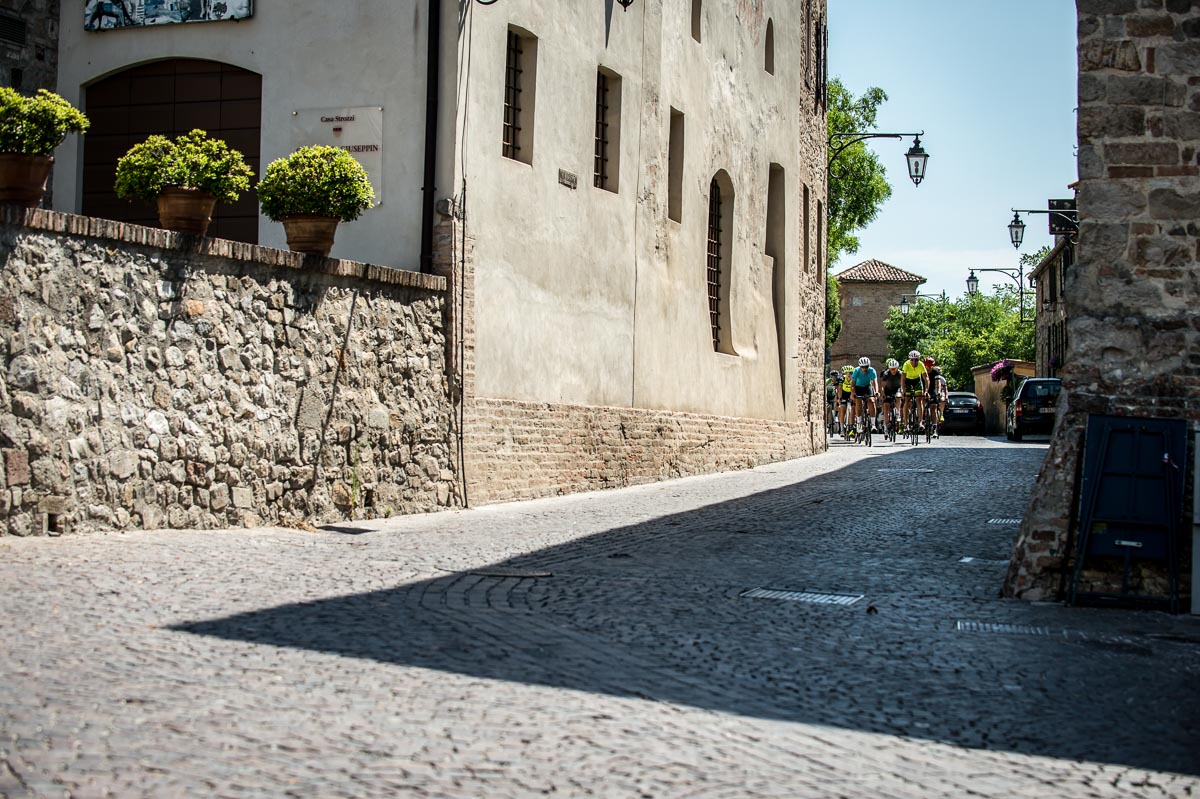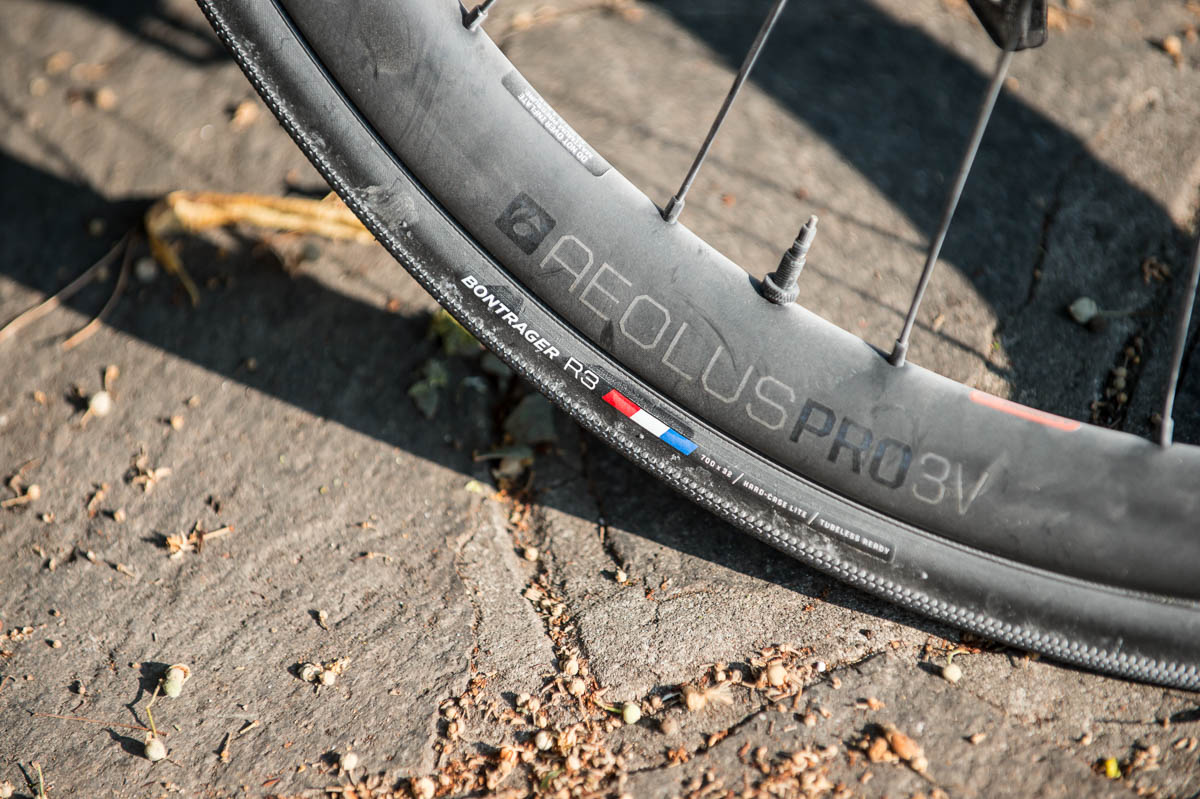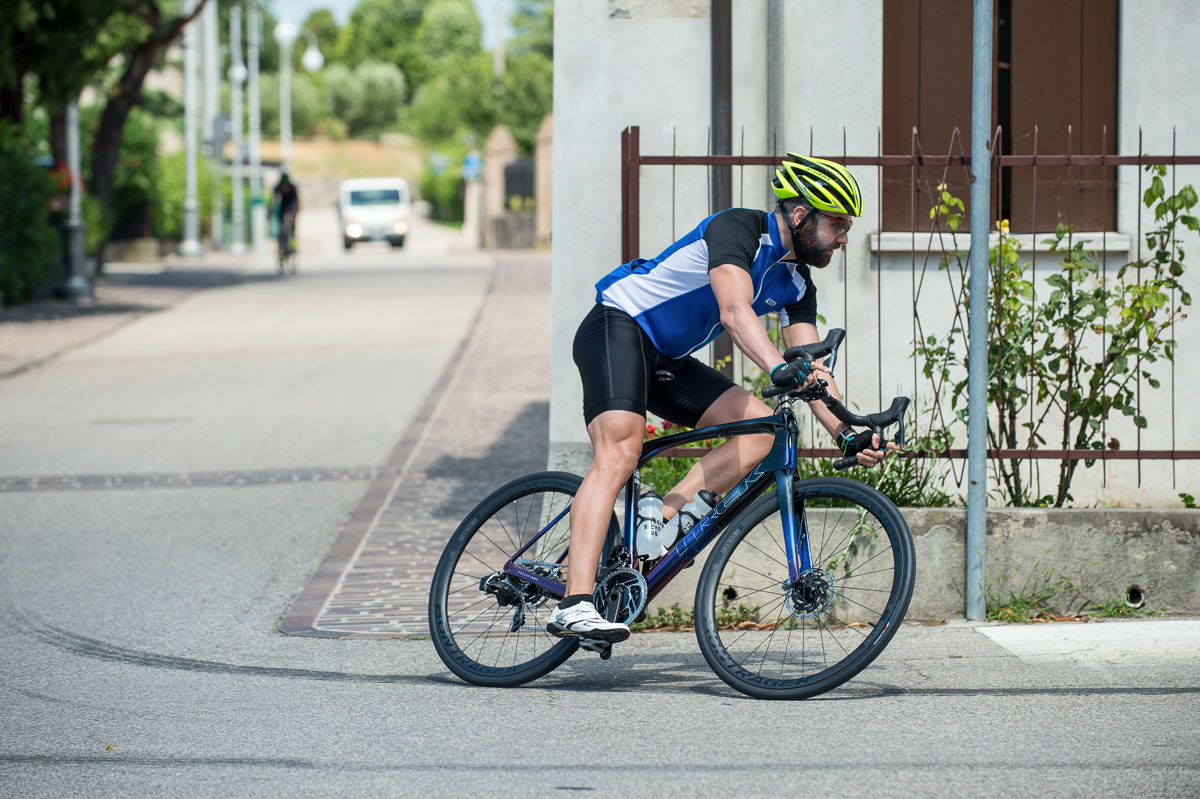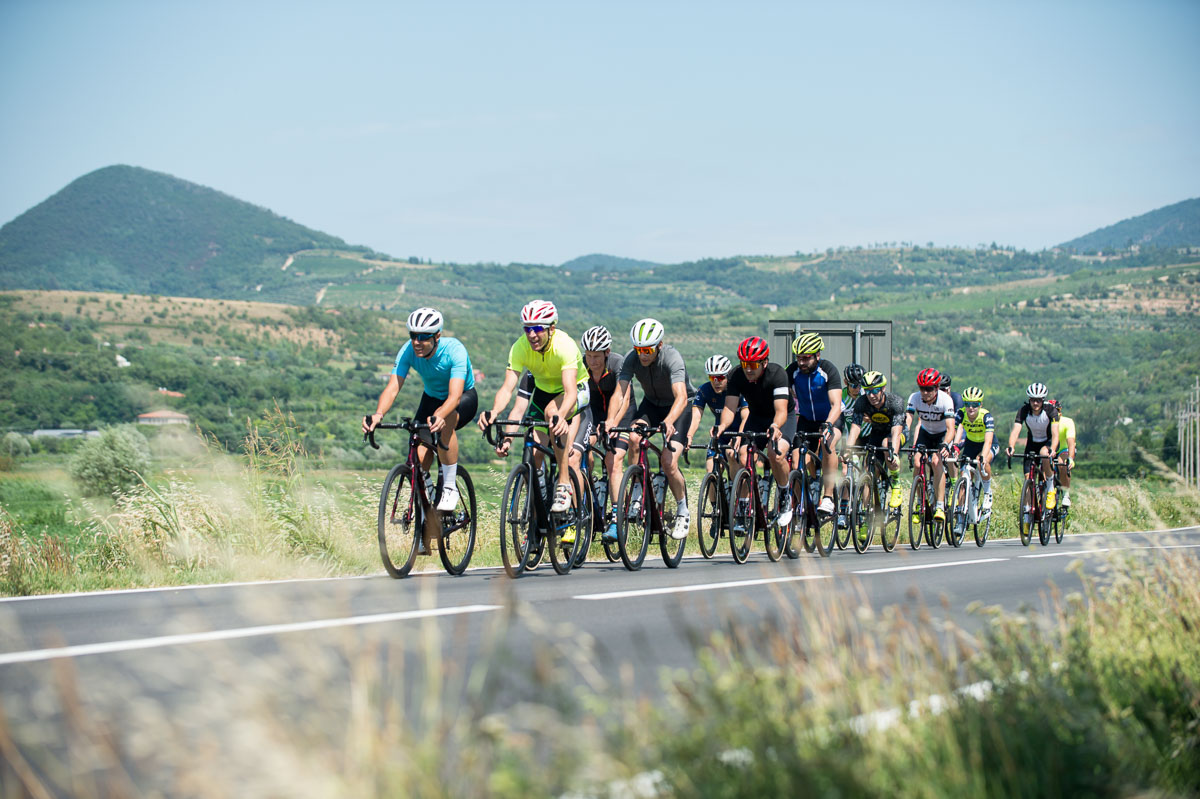The new 2020 Trek Domane is their most advanced ever, with refinements all-around for even smoother ride quality. Now featuring 38mm tire clearance, you might wonder – could it be for more than just rough pavement? Does it start to crowd the Checkpoint gravel bike or Boone cyclocross bike? Does the new adjustable IsoSpeed really make a difference? We took an eTap-equipped SLR 9 out for a 60km jaunt in Italy to see what we could learn.
First Ride Revew: 2020 Trek Domane disc brake endurance road bike
The Domane is the workhorse in the Trek road bike lineup, focusing on ride quality and versatility rather than chasing every last gram of drag or weight. We did a deep dive into the tech, specs, and pricing, so check that out if you missed it. We had a 60km ride planned through a mix of pavement types, climbs, flats, and descents, giving us a good chance to feel the bike out.
Our test bikes were a hybrid setup of sorts, using an SLR Project One platform with SRAM Red eTap AXS and Bontrager Aeolus Pro 3V disc brake wheels. We had the option for 28 or 32mm tires, and I opted for the 32mm R3 to get a seat-of-the-pants feel for Trek’s claim that 32mm tires roll faster than 28s in almost all conditions. And – since we’d be riding in a group, I figured the slight aero penalty wouldn’t matter so much.
I didn’t have a caliper on me, but it looked like the tires easily inflated to 34mm on the super fat rims, with a 25mm internal width. I inflated to the low 60’s, curious if it would feel slow.
All of our bikes had the standard Endurance geometry, which was perfect for me as a long-legged fellow (who needs a realistic sized head tube). My 58cm with 100cm stem was a great fit, and I appreciated the traditional stem and headset spacers.
As we got rolling, the smooth ride of the Domane became immediately apparent. Though the roads were largely in good shape, we encountered sections of rough pavement and light cobblestone roads, which were transformed into near-perfect surfaces by the Domane. Though my test bike was equipped with the adjustable IsoSpeed, I didn’t feel the need to adjust it and left it as-is.
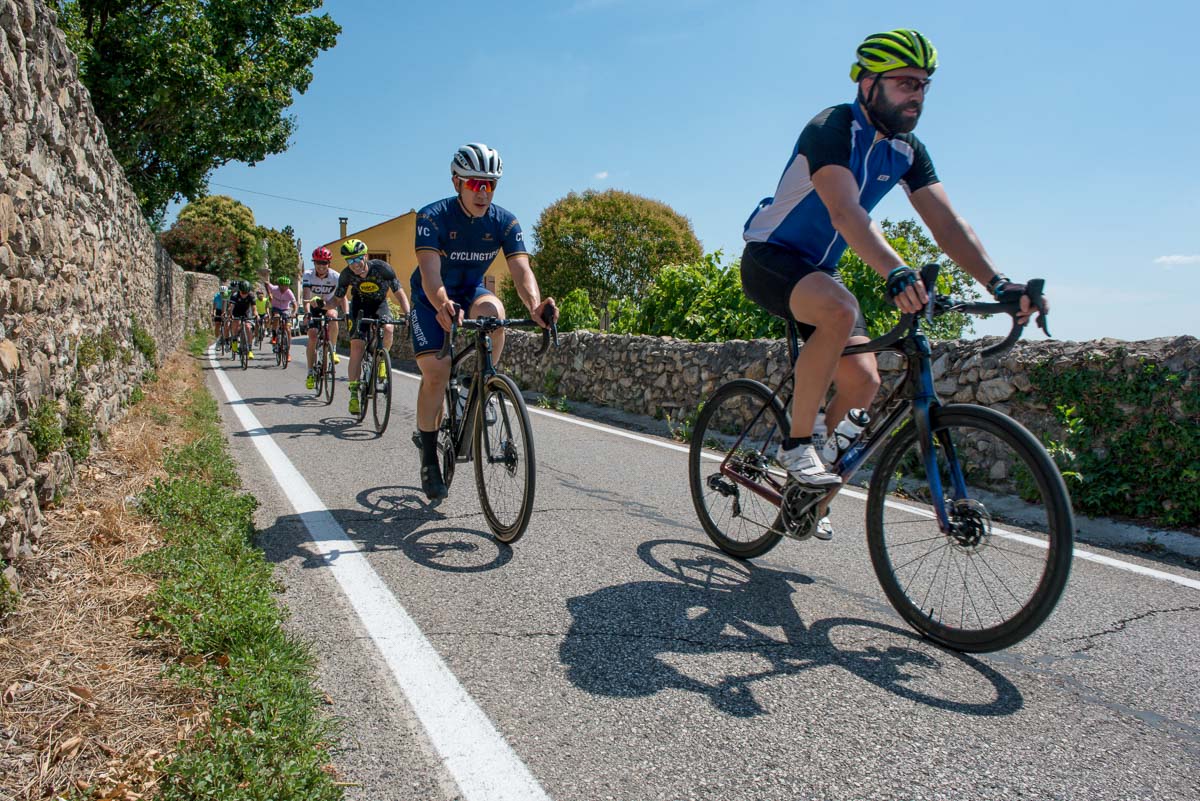
The ride quality of the Domane is hard to describe. It’s eerily smooth, in a way that almost doesn’t make sense. It doesn’t necessarily feel alive like a steel bike, or dead like an old carbon bike. I want to say it’s smooth like a Cadillac, but that implies a feeling of slowness or soft handling – which is far from accurate. The take-home is that it’s in a league above full-rigid bikes, no matter how fancy their carbon lay-up or tube shapes.
One of my fellow editors commented that technology has clearly eclipsed what is possible with steel tube selection for a traditional road bike… and I have to agree. I’ll admit – I’m old school, and part of my old school brain doesn’t want to admit the previous fact. The only question becomes if you want to pay for the new technology, and do some of the infrequent maintenance for systems like IsoSpeed.
Does that buttery ride quality and big tire clearance make the Domane a gravel bike? Yes and no. Yes, it can be ridden on gravel roads. In fact, I suspect it would out-perform many competitors’ full-rigid gravel bikes, especially if you have the adjustable SLR model and dial it to a more compliant setting. However, the 38mm clearance won’t fit some of the larger gravel tires, and the bike doesn’t have accommodations for many of the extra bags, bottles, and other common gravel accessories. In short, the Domane is certainly very gravel capable, but is not a purpose-built gravel bike.
Rounding out the discussion on tires, how did those 32mm Bontrager R3s feel? I was more than a little bit surprised at how not-slow they felt, and yes that’s a technical term. Don’t get me wrong – I’m slow, and I got dropped on most of the steep climbs of the day, but the combination of frame, suspension, wheel, and tire felt like a race-capable bike – just a lot more comfortable.
Descending felt very sharp and secure, aided by the large tires and IsoSpeed front end. I hit a shaded pothole on one downhill that barely moved my handlebars at all – a much less dramatic affair than on a rigid bike with 23mm tires.
The compromise for all of this added technology is weight. You get down tube storage. You get a fantastic stealth suspension system. You get fender mounts and nice light mounting locations. You also get about 350-400 grams of extra weight compared to many of the full rigid performance carbon road frames out there, with the lightest complete build at 17.2 pounds (and a price of over $11,000). Trek knows this and has the Emonda to handle feather-weight duties – I just point it out as an evolving trend with modern disc brake bikes with extra features. You get a lot, but you pay a lot and cannot hit the weights of older rim brake carbon bikes.
Overall, our ride of the Domane showed me that new technology can be packaged in a way that feels traditional or familiar. The frame looks ‘normal’ but has legitimate suspension. The cables are internal, but the stem, bar, and routing aren’t impossibly integrated. It has more tire clearance than most people need, giving it capability beyond its category. Trek has put together a very compelling package – one that might not tick every box on paper for the gram-counters – but outperforms almost everything the real world.
